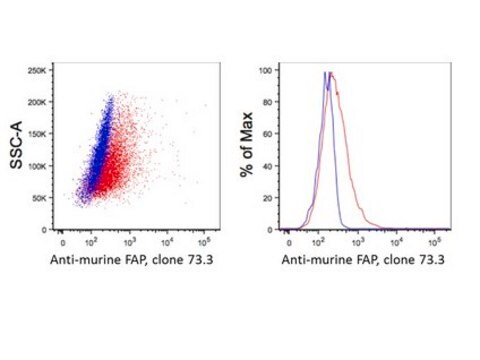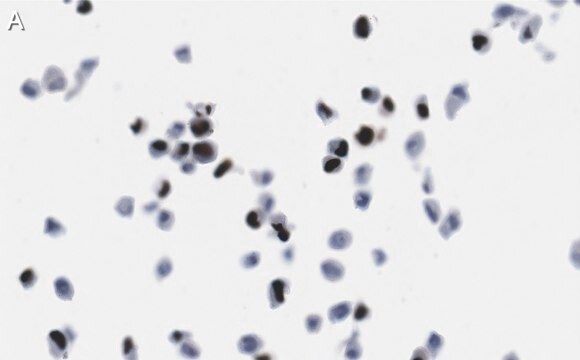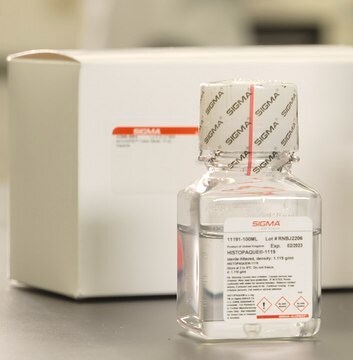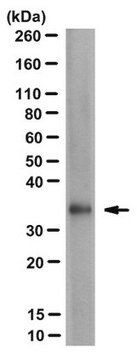MABN784
Anti-FMR1polyG Antibody, clone 2J7
clone 2J7, from mouse
Synonym(s):
Fragile X mental retardation protein 1 RANT fusion, FMR1polyG, FMRP RANT fusion, FMR-1 RANT fusion
About This Item
Recommended Products
biological source
mouse
antibody form
purified immunoglobulin
antibody product type
primary antibodies
clone
2J7, monoclonal
species reactivity
human
technique(s)
immunocytochemistry: suitable
immunohistochemistry: suitable
western blot: suitable
isotype
IgG2bκ
UniProt accession no.
shipped in
wet ice
target post-translational modification
unmodified
Gene Information
human ... FRAXA(2477) , FRAXA(108684022)
General description
Specificity
Immunogen
Application
Immunohistochemistry Analysis: A representative lot detected both ubiquitinated inclusions-associated and non-inclusions-associated FMR1polyG immunoreactivity by dual fluorescent immunohistochemistry using paraffin-embedded brain tissue sections from Fragile X-associated Tremor/Ataxia syndrome (FXTAS) patients (Todd, P.K., et al. (2013). Neuron. 78(3):440-455).
Western Blotting Analysis: A representative lot detected recombinant FMRpolyG GST fusion constructs, while only one immunoreactive band (~15 kDa) could be detected in Fragile X-associated Tremor/Ataxia syndrome (FXTAS) patients brain lysates due to extended aggregation of FMR1polyG (Todd, P.K., et al. (2013). Neuron. 78(3):440-455).
Immunocytochemistry Analysis: A representative lot detected exogenously expressed FLAG-FMR1polyG constructs by fluorescent immunocytochemistry (Todd, P.K., et al. (2013). Neuron. 78(3):440-455).
Neuroscience
Neurodegenerative Diseases
Quality
Western Blotting Analysis: 1.0 µg/mL of this antibody detected an exogenously expressed FMR1polyG GFP fusion construct in transfected COS cells.
Target description
Physical form
Storage and Stability
Other Notes
Disclaimer
Not finding the right product?
Try our Product Selector Tool.
recommended
Storage Class Code
12 - Non Combustible Liquids
WGK
WGK 1
Flash Point(F)
Not applicable
Flash Point(C)
Not applicable
Regulatory Listings
Regulatory Listings are mainly provided for chemical products. Only limited information can be provided here for non-chemical products. No entry means none of the components are listed. It is the user’s obligation to ensure the safe and legal use of the product.
JAN Code
MABN784:
Certificates of Analysis (COA)
Search for Certificates of Analysis (COA) by entering the products Lot/Batch Number. Lot and Batch Numbers can be found on a product’s label following the words ‘Lot’ or ‘Batch’.
Already Own This Product?
Find documentation for the products that you have recently purchased in the Document Library.
Our team of scientists has experience in all areas of research including Life Science, Material Science, Chemical Synthesis, Chromatography, Analytical and many others.
Contact Technical Service






